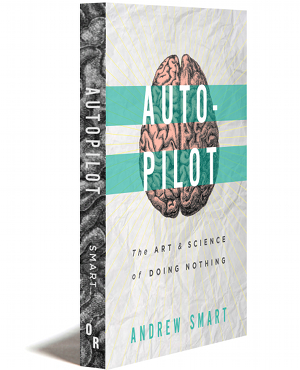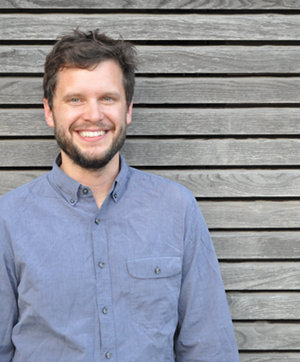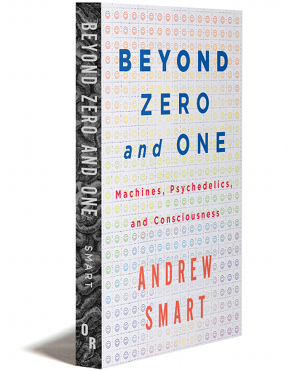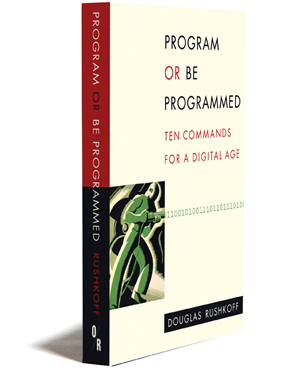
Autopilot
THE ART & SCIENCE OF DOING NOTHING
"A tour de force of an academic field that doesn't really exist just yet – the science of being idle. Andrew Smart synthesizes a whole range of cutting-edge ideas in neuroscience, dynamic systems theory, psychology, literature, pop culture, and philosophy, and gives us a hugely entertaining read about what we do most of the time, i.e. nothing. Autopilot finishes with the most stimulating and provocative ideas about who we really are, reflections on what our society has come to, and how to fix it. If you are to read one pop science book this year, this should be it." —Prof. Hakwan Lau, Department of Psychology, Columbia University
TweetBuy This Book
|
Paperback: $16/£11
|
E-book: $10/£7
|
Print + E-book: $20/£14
|
About the Book
Andrew Smart wants you to sit and do nothing much more often – and he has the science to explain why.
At every turn we’re pushed to do more, faster and more efficiently: that drumbeat resounds throughout our wage-slave society. Multitasking is not only a virtue, it’s a necessity. Books such as Getting Things Done, The One Minute Manager, and The 7 Habits of Highly Effective People regularly top the bestseller lists, and have spawned a considerable industry.
But Andrew Smart argues that slackers may have the last laugh. The latest neuroscience shows that the “culture of effectiveness” is not only ineffective, it can be harmful to your well-being. He makes a compelling case – backed by science – that filling life with activity at work and at home actually hurts your brain.
A survivor of corporate-mandated “Six Sigma” training to improve efficiency, Smart has channeled a self-described “loathing” of the time-management industry into a witty, informative and wide-ranging book that draws on the most recent research into brain power. Use it to explain to bosses, family, and friends why you need to relax – right now.

Publication July 30 2013 • 148 pages
Paperback ISBN 978-1-939293-10-7 • Ebook ISBN 978-1-939293-11-4
About the Author
 |
A human factors research scientist, Andrew Smart received B.S. and M.S. degrees from Lund University in Lund, Sweden, where he worked on using noise to improve memory and attention in children with ADHD. As a research scientist at New York University, he analyzed brain imaging data from experiments on the neural basis of language. His recent work includes developing sensor-based indices of cognitive effort among cancer and stroke survivors. Autopilot: The Art & Science of Doing Nothing is his first book. |
Read an Excerpt
from Chapter 2
Just as it is unsettling to imagine there may actually be a “dark side of the force” that we know almost nothing about, it is spooky that our brains are doing all this stuff while we sit and stare into space. For much of the history of modern science, what has appeared to be noise actually represents a deeper truth that we do not yet comprehend. In neuroscience and psychology, the brain’s spontaneous activity has been considered noise until very recently. But it could turn out that this noise holds the key to truly understanding our minds.
Scientists like Buzáki and Raichle estimate that as much as 90% of the brain’s energy is used to support ongoing activity. This means that, regardless of what you are doing, your resting brain represents the vast majority of your brain’s total energy consumption. This is also known as the brain’s intrinsic activity. When you activate your default mode network by doing nothing, it becomes robust and coherent. So, somehow our brains seem to violate the second law of thermodynamics which states that left unattended, things in general get messy and lose heat. This is called entropy. It’s why your kitchen just gets messier and messier the longer you don’t clean it. However, the old adage that “the dishes don’t do themselves” does not apply to the brain.
On the contrary, when you leave important parts of your brain unattended by relaxing in the grass on a sunny afternoon, the parts of your brain in the default mode network become more organized and engaged. In your brain, the dishes do wash themselves if you just leave them alone. It turns out your brain is never idle. In fact, it may work harder when you’re not working at all.
Eventually physicists had to accept that if our knowledge of the universe is not completely wrong, then the universe is mostly made from dark energy. Similarly, it is possible that much of the brain is being ignored by cognitive neuroscience and psychology.
Psychological brain imaging experiments are designed to test brain activation levels during specific tasks in order to find out what certain brain structures are doing during those specific tasks. In Chapter 1, I pointed out that an assumption in brain science is that any activity detected that is not affected by experimental manipulations is just noise. Until its existence was verified, the brain’s resting state network was usually considered someone else’s noise. Do not confuse this with the myth that we only use 10% of our brains. What science has revealed is that we use all of our brain, just not in the ways many people assume.
Only minor perturbations occur in the brain’s ongoing activity during a mental task like adding something to your to-do list. For example, the neural energy required to press a button whenever a red light appears in a laboratory experiment is only a small fraction (as little as 0.5%) of the total energy that the brain expends at any moment. In contrast, the default mode of your brain uses a far higher percentage of your brain’s total energy. Figuring out just what the brain is doing while consuming all that energy when you are spacing out is precisely what Marcus Raichle and other neuroscientists are beginning to do.
One of the striking things about our brains is that in terms of energy consumption, they are as greedy as Goldman-Sachs. The brain represents about 2% of your total body weight, yet it consumes 20% of your body’s energy. It is the biological equivalent of the 1%. In other words, your brain is a pig and it is selfish. This may be why ultra-endurance athletes can start to hallucinate after running fifty miles, or when participating in the grueling bicycle contest such as Race Across America during which cyclists ride almost non-stop from California to Maryland.
When blood sugar gets low during some insane endurance challenge for example, and you are sleep deprived, your conscious awareness is the first thing in your body to start experiencing problems. This is true in general and especially during exercise. Unnecessary-for-immediate-survival brain operations like having coherent thoughts are sacrificed in order for the brain to be able to maintain vital functions like respiration during a drop in glucose, electrolytes, or water. Confusion and hallucinations are also warnings from our brain that we are dangerously close to doing damage to our bodies. The next step is passing out. This is the brain’s last-ditch way of protecting our bodies from exercising to death.
It doesn’t always work. Every year several participants in marathons die because they inadvertently pushed their brains and bodies beyond certain critical limits. The brain will keep trying to consume its disproportionate share of your body’s energy. That’s why when your body runs out of energy you become a drooling zombie. Now, imagine that running yourself to death in a marathon is a compressed version of your entire life.
During the marathon, as you approach the limits of your body’s capacity to withstand stress, your brain will keep giving you warnings. Your muscles will feel fatigued, and you will start to have an overwhelming urge to stop. You may become disoriented and have momentary lapses in awareness.
Some people can override these warnings and push themselves past the point of no return. Over the long term in a less intense, but no less insidious way, our brains are constantly warning us that we work far too much. On the time-scale of a lifetime, constant stress from over-work raises your risk of depression, heart-disease, stroke, and certain kinds of cancer. It’s a long, horrible list.
In the Media
Forbes, June 20th 2014
Lean Freak Show, June 20th 2014
Forbes, May 16th 2014
CNN.com, May 16th 2014
Less is More Podcast, May 12th 2014
Alpha Efficiency Magazine, April 11th 2014
Radio New Zealand, April 9th 2014
Abc.net.au, March 27th 2014
Voce, February 2014
The New Republic, December 13th 2013
New Statesman, December 12th 2013
The Airship, December 10th 2013
Idler, November 12th 2013
Gaia Media, September 30th 2013
Popular Science UK, September 21st 2013
The Independent, September 4th 2013
Slate, July 29th 2013
Enough podcast, July 23rd 2013
Switch & Shift, July 22nd 2013
The Right to Be Lazy, June 22nd 2013





